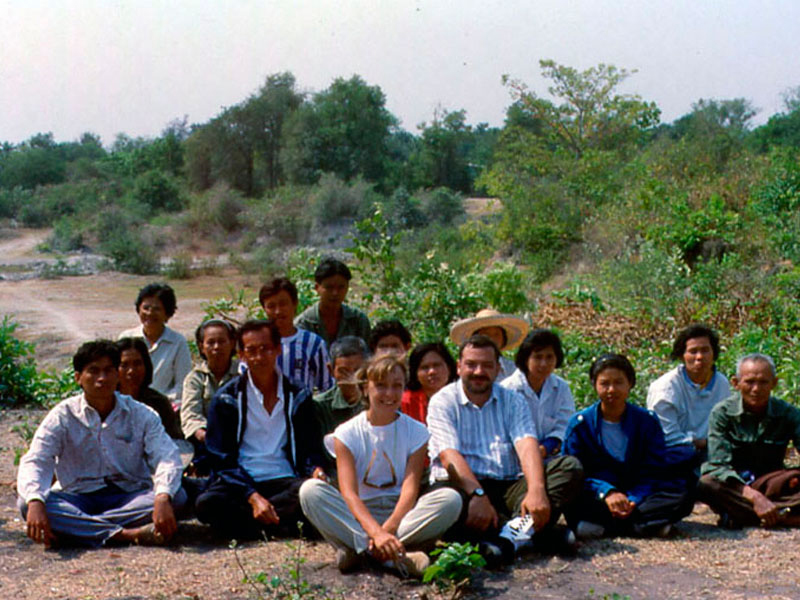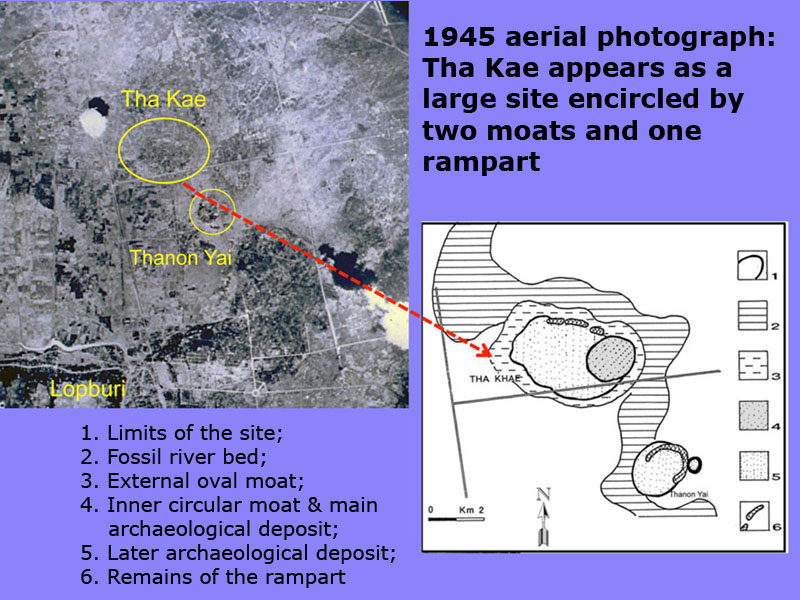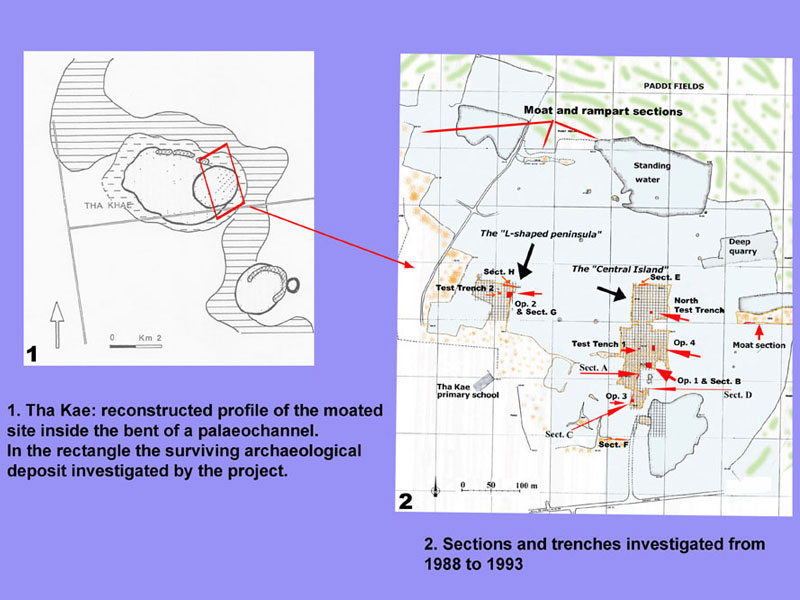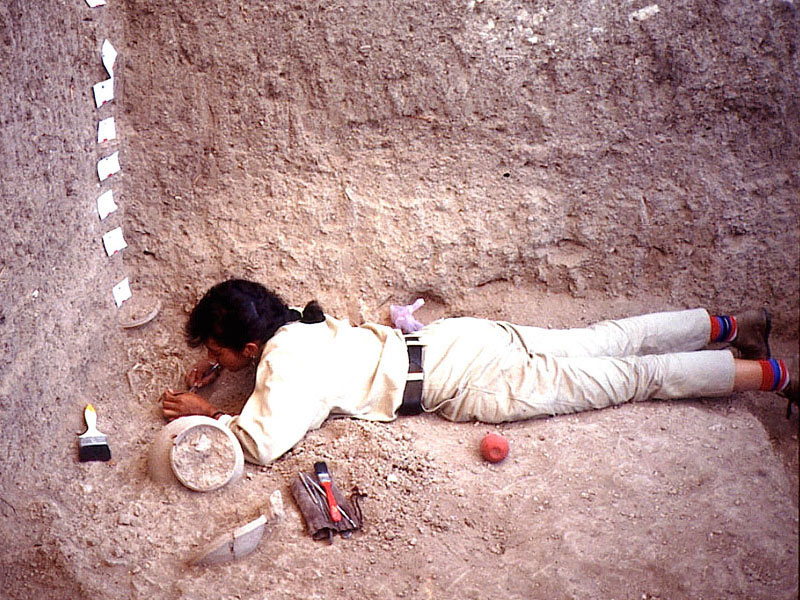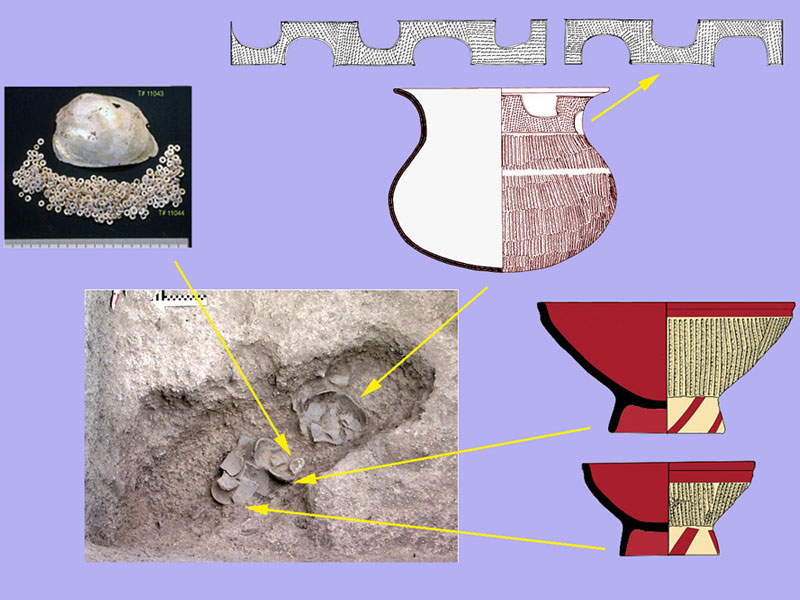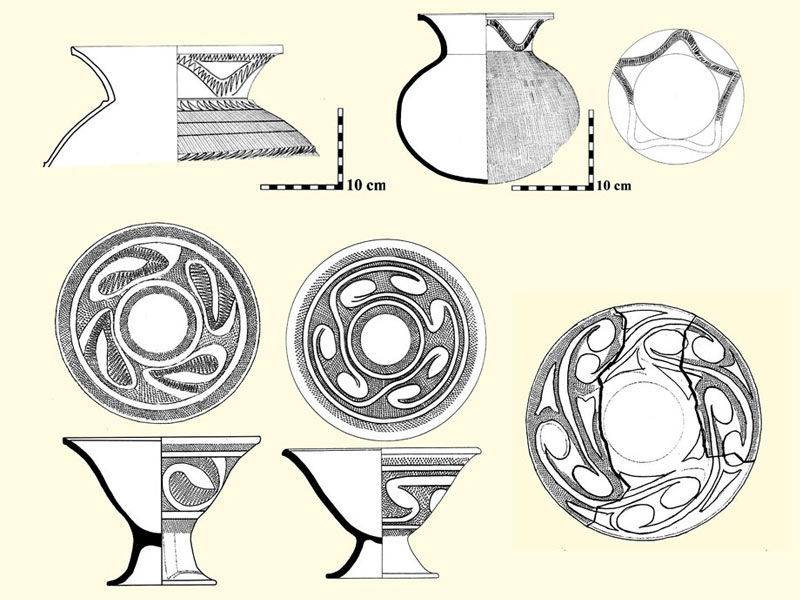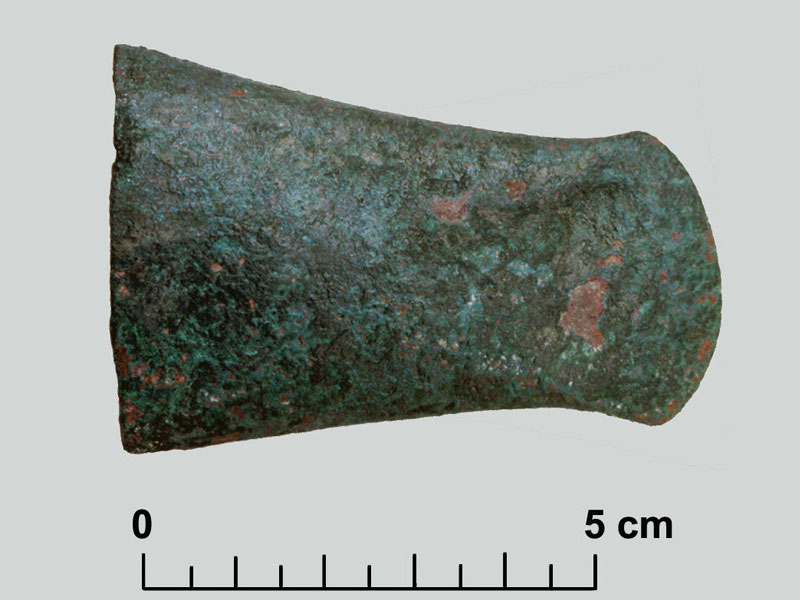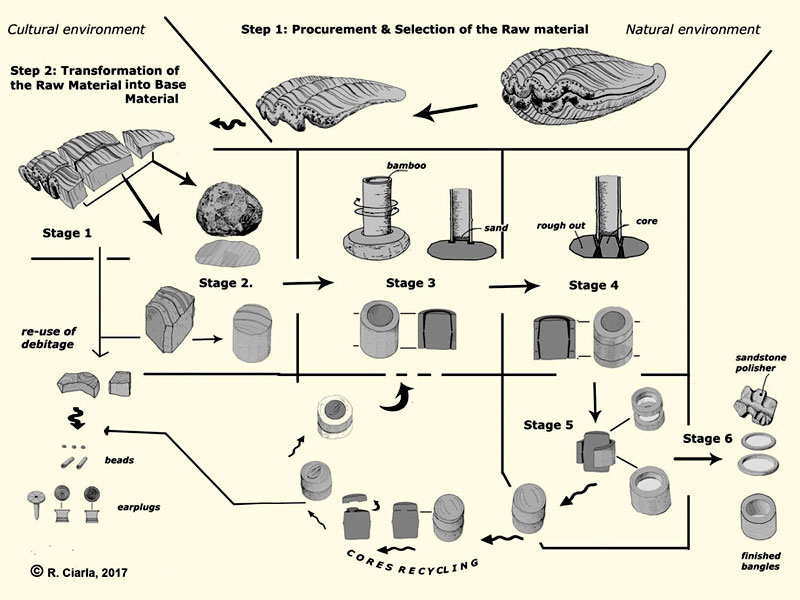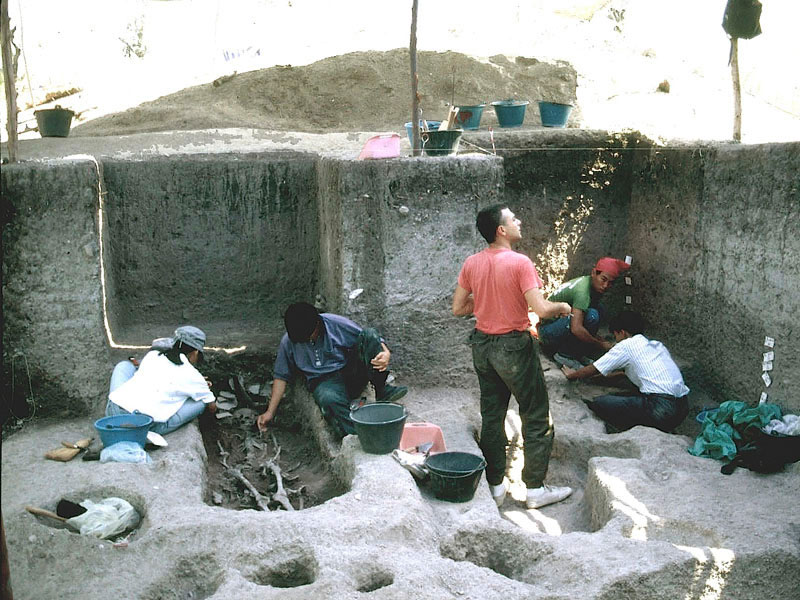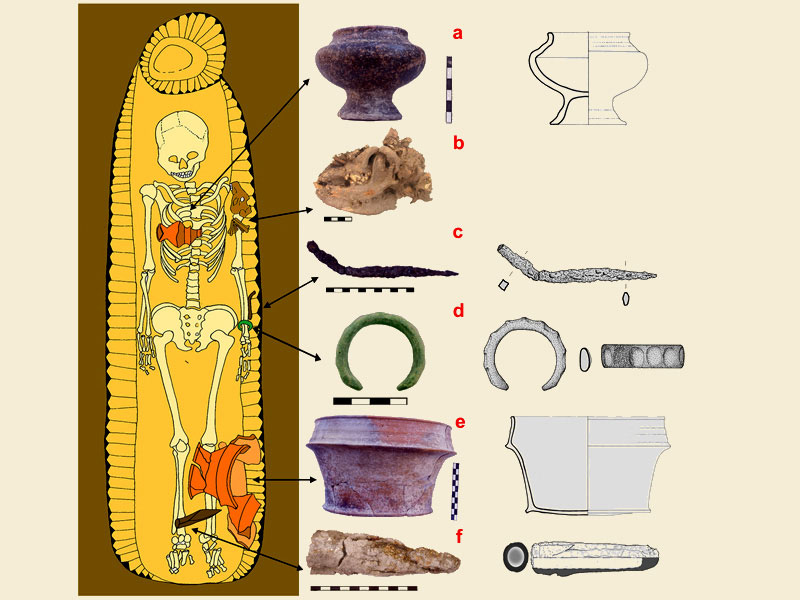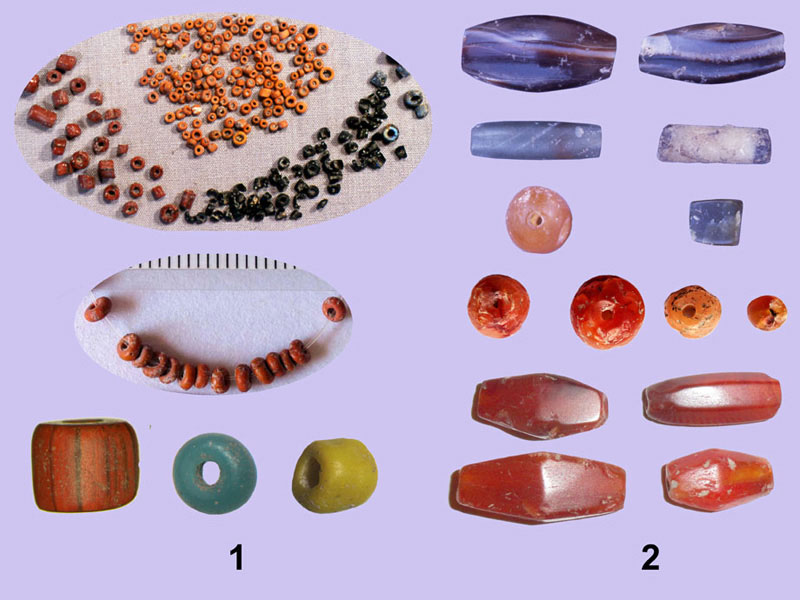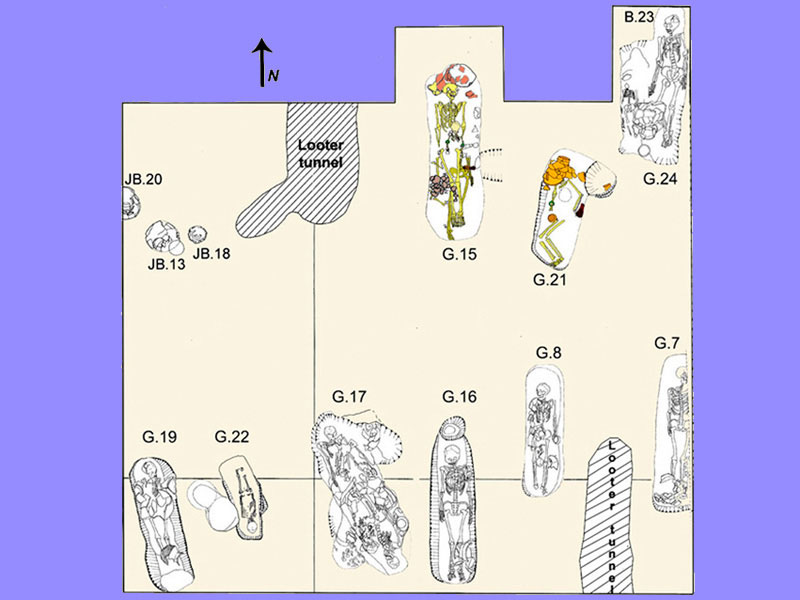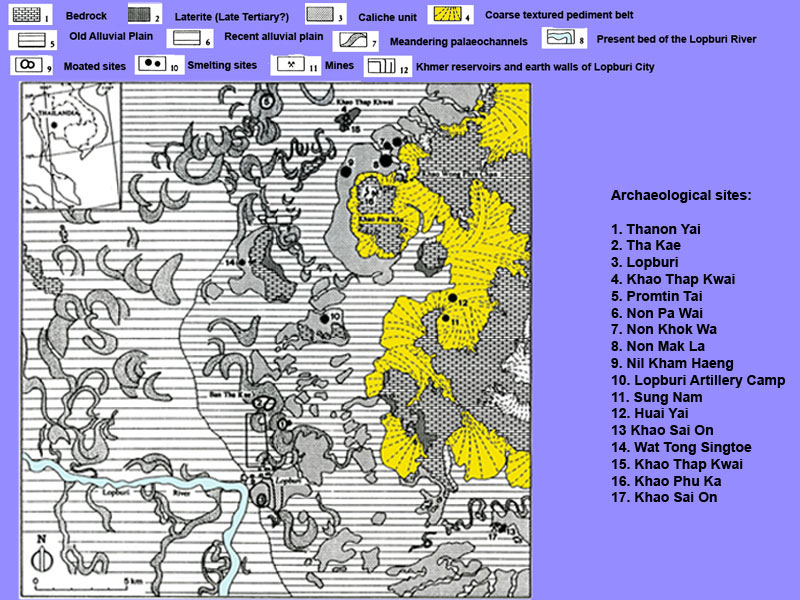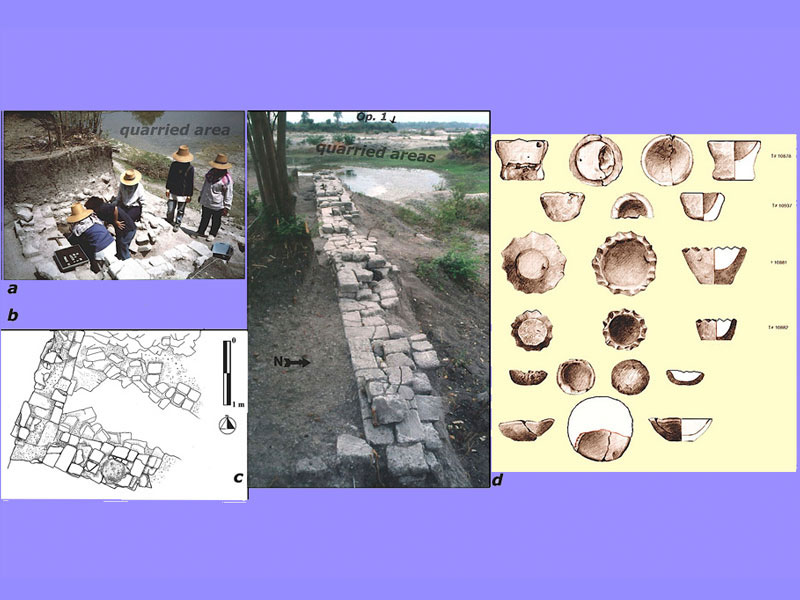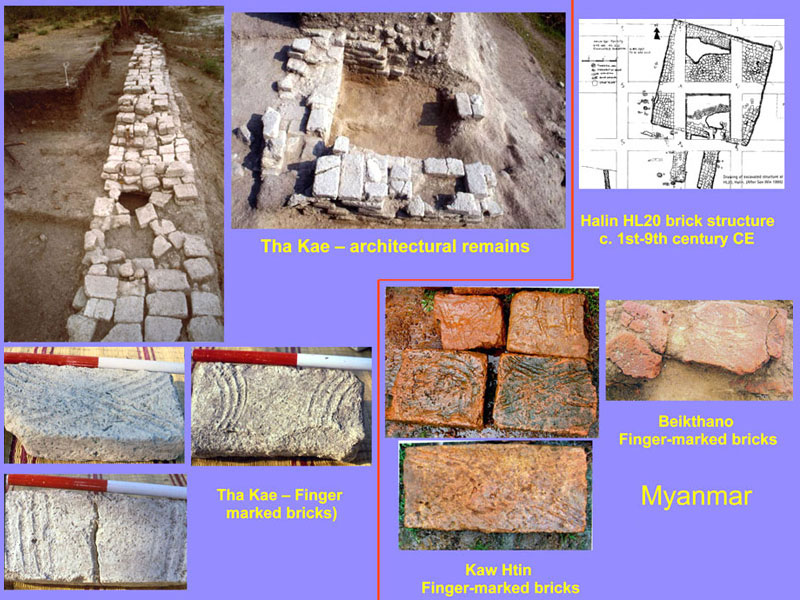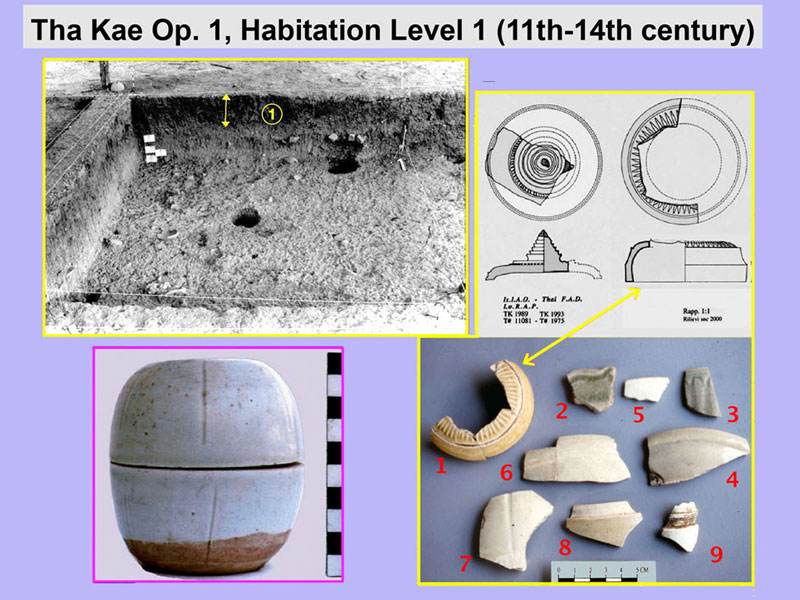1988-1993
Archaeological Investigations at Tha Kae
The Italian-Thai project started (1988) its fieldworks at Tha Kae (TK) (Lopburi Capital Dist., N 14°50’41.52″, E 100°37’09.77″) investigating the site’s stratigraphy along the sections that the quarry had exposed; properly stratigraphic excavations followed in 1989, 1990, 1993 (Fig.s 1-2).
Neolithic early cultivators (c. 2000-1100 BCE) settled on TK river terrace in a still marshy environment. Little evidence of Neolithic housing has been found, but the graveyard returned significant archaeological data, particularly on the burial rituals (Fig. 3): e.g. small shell beads to sew on the dresses or to wear at the neck and the wrists, deposition of a freshwater clamshell on the body, and ceramic vessels of different types embellished by Thick Red Burnished Slip (TRBS) and Red Painted motifs, and by “Incised-and-Impressed” (I&I) meanders motifs (Fig.s 4-5). This last “decoration” had been done for esthetical purposes, but not only.
Dr. Rispoli noticed that this decoration, likely vehicle of symbolic meanings, besides the Lopburi River basin, was also present in several other regions: from the Changjiang valley (China) to the Khorat plateau (NW Thailand), the Mekong valley, the Red River valley. This observation led her to trace how that “vocabulary” of stylistic forms and techniques moved Southwards from the Changjiang valley to Mainland Southeast Asia in a long time span (ca. 4000 to 2000 BCE) reasonably in association with early agricultural practices.
Copper metallurgy emerged in the Lopburi region ca. 1100 BCE, as documented at the sites the ‘Thailand Archaeometallurgy Project’ (TAP) excavated in the Khao Wong Prachan Valley. At Tha Kae, in the area of the site spared from quarrying and looting activities, copper metallurgy is very elusive, but, during the local Bronze Age (c. 1100-500 BCE), other craft activities emerged and increased which then boomed in the Iron Age (c. 500 BC-500 CE). E.g., the making of personal ornaments (ear studs, rings, different types of bracelets) from marine shells (mostly Tridacna maxima), which were collected or imported from the shore of the marshy Gulf of Thailand, then much closer to Lopburi than it is today (Fig.s 6-7)
The emergence of iron metallurgy led to the availability of more effective tools: spades and hoes (Chinese-inspired) for peaceful activities (i.e. to dig drainage/irrigation canals and paddy fields) and weapons for more aggressive purposes (Fig. 8).
In the mid-Iron Age (c. 200 BCE-300 CE) a circular ditch defended the settlement. This feature associated to new inhumation rituals, including the disposition of iron tools in the burials, hint at a greater social complexity and economic growth (Fig. 9). In the inhumation rituals personal ornaments of bronze, glass, agate, nephrite and carnelian, either imported from distant sources (southern Thailand and/or India) or locally made in imitation of exotic goods, signalled the wealth of the dead (Fig. 10). Multiple individuals buried inside the same pit suggest the importance acquired by kinship ties: i.e. a female with a baby in between her legs as it had just been given birth (mother and child?), two adults and an infant (a family?), three inhumations accompanied by a small dog, seven individuals of different age and sex stacked in sequence inside a pit (more generations of a family?), etc. (Fig. 11).
Evidently daily life was not much different from what people live today: working hard in the fields, playing with the family puppy, quarrelling with the neighbours, indulge in the vanity of wearing jewels, relaxing while listening to some music, as a small ocarina (or whistle) of terracotta from the burial 19 suggests.
In order to understand how man interacted with the environment of the Lopburi Plain during the Neolithic, Bronze and Iron Ages, the project’s geomorphologist, Mauro Cremaschi, surveyed our study area. This study led to a better understanding of man-environment relationship over a time span ranging from 2000 BCE to 1700 CE (Fig. 12).
The early period witnessed the first modifications of the landscape by the early farmers settled in the marshy environment of the alluvial plain. By around 1000 BCE, Cremaschi observed forest clearing intensification along the mountain slopes and the plain due to, on the one hand, the increase in the mining and smelting of copper ores and, on the other, to the expansion of farming communities.
Further deforestation, in the middle Iron age (ca. 200 BCE-300 CE), was likely linked to social and economic changes sparked by the rise of centres of social aggregation, such as the moated sites (e.g. Tha Kae, Lopburi, Thanon Yai, Promtin Tai), and by the use of iron implements in paddy cultivation.
In the late Iron age, or proto-Dvaravati Period (4th-6th centuries CE) the emergence of the Mon people (and language) in central Thailand and in southern Myanmar, is manifested by the wide distribution of moated sites of varying width and complexity. The variable aggregation of these villages around one prominent among them would have laid the basis of the unstable city-states of the Dvaravati period (Dvaravati is a Sanskrit word meaning “of the many gates”).
According to geomorphological and to archaeological evidences, in the centuries preceding the blossoming of the Mon-Dvaravati art style (7th-11th century CE), TK expanded and was enclosed by a larger, oval-shaped, system of defence, formed by a moat and a rampart reinforced with a palisade.
Silver “coins” or medals with the inscription (in Sanskrit written in Pallava Grantha characters) Sridvaravati Svarapunya (“meritorious act of the Dvaravati Lord”) and short devotional inscriptions in Pali found in Central Thailand mark the transition from protohistory to history around the 6th/7th century CE.
At TK, besides a silver “coin” and a copper ritual vessel of Indian style found by chance, the remains of large architectural structures witness the Dvaravati period occupation. Small terracotta votive lamps found along with the architectural remains (largely destroyed by quarrying activities) reinforce their ritual/religious function (Fig. 13).
Worth noticing is the building material consisting of sun dried “finger-marked bricks” widespread from Central Thailand to Myanmar (Fig. 14).
The life of the site did not end with the weakening of the Dvaravati city-states and the consequent Khmer occupation of Central Thailand (11th-13th century), as evidenced by the discovery of fragments of Khmer ceremonial vases in glazed ceramic (Fig. 15).
